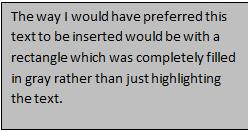My Patreon page is now live!
I could really use your help. If you’ve seen this more than once that means that you’re hopefully getting something useful out of this blog. I pay all of the costs for hosting, and put a lot of effort into creating the content. Please consider becoming a Patreon supporter.
If you can spare it, please click here and become a supporter. Even $1 a month can help me continue this project.
Chess Board Options by Larry Kaufman, New in Chess 2021 224pp
Larry Kaufman is an interesting character in the world of chess. He’s known as someone who has long worn several hats. Player, Computer Guru, Opening Theoretician, and on top of that, a high level shogi player. In addition to his work in chess, Kaufman spent years on a career in the world of finance.
As a result of this varied life, this book takes on the task of covering these phases of his career without seeming overly disjointed.
Kaufman manages this for the most part, using the technique of splitting the book into sections which cover his many roles. The book is split into five parts:
- 20th century champions I have known
- My non-chess career: options, shogi, and other games
- My chess career and my students
- Computer chess
- Various chess-related topics
One random and fun thing about this book is that both it, and the prior book I reviewed, Timman’s The Unstoppable American, contain the game Browne – Fischer from Zagreb 1970.
Getting on to the book itself, let’s start with what I perceive and the main defect here. The final section, “various chess-related topics” struck me as mostly filler. It’s not that the chapters aren’t interesting at times, as some of them most certainly are. Rather the issue is that these are pieces that are more appropriate as stand-alone articles in magazines or blogs. They did not fit harmoniously into this book.
Topics in this part include things like Kaufman’s take on chess ratings, Armageddon games, games played at odds, etc.
As for the rest of the book, I found it to be quite interesting.
In the first part of the book Kaufman covers champions that he knew. These range from local to national to world champions. The pen portraits delivered by Kaufman were enlightening and thoughtful. Sure, he covers famous champions he knew like Fischer, Korchnoi, Gligoric, etc., but he also has a chapter on Steve Brandwein.
Like many in the chess world, Kaufman found work in the world of finance. Specifically running an options trading company. The nice thing about the chapters on topics like this is that they’re long enough to go into relevant detail while also being short enough as to not bog the reader down. The overall effect serves to keep the narrative flowing.
As for the chess, the book contain 64 games. Naturally many involve computers. The annotations are well done, though at times I feel they’re a bit too “Informant like” in nature. I suppose that for a computer guy that makes sense, but I would have preferred a bit more prose.
In the chapter on Kaufman’s three students who became IM’s I learned that his son, Raymond, is one of them. I didn’t know that the Kaufman’s are one of the rare parent/child titled player combinations. I can’t think of another others off the top of my head, though I feel that there is at least one more. So if you know of any, please say so in the comments.
All in all, this book is a solid effort and worthy of reading. It should be pointed out that this is very much not a book on chess improvement. Yes, it contains annotations by a title player, so there are some lessons to be learned, but this book is not designed in and of itself to help you become a stronger player.
Til Next Time,
Chris Wainscott


